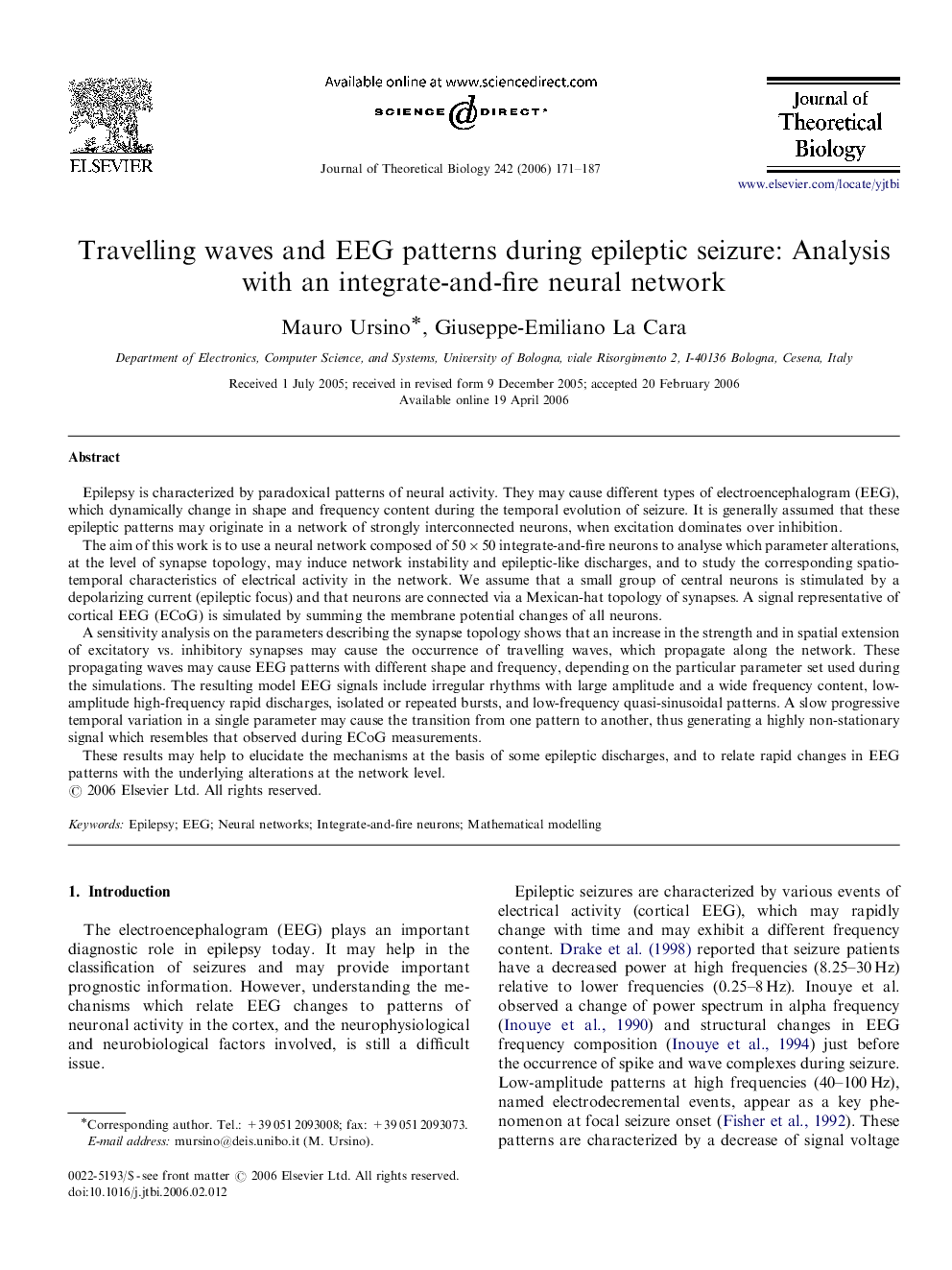| کد مقاله | کد نشریه | سال انتشار | مقاله انگلیسی | نسخه تمام متن |
|---|---|---|---|---|
| 4499488 | 1319032 | 2006 | 17 صفحه PDF | دانلود رایگان |

Epilepsy is characterized by paradoxical patterns of neural activity. They may cause different types of electroencephalogram (EEG), which dynamically change in shape and frequency content during the temporal evolution of seizure. It is generally assumed that these epileptic patterns may originate in a network of strongly interconnected neurons, when excitation dominates over inhibition.The aim of this work is to use a neural network composed of 50×50 integrate-and-fire neurons to analyse which parameter alterations, at the level of synapse topology, may induce network instability and epileptic-like discharges, and to study the corresponding spatio-temporal characteristics of electrical activity in the network. We assume that a small group of central neurons is stimulated by a depolarizing current (epileptic focus) and that neurons are connected via a Mexican-hat topology of synapses. A signal representative of cortical EEG (ECoG) is simulated by summing the membrane potential changes of all neurons.A sensitivity analysis on the parameters describing the synapse topology shows that an increase in the strength and in spatial extension of excitatory vs. inhibitory synapses may cause the occurrence of travelling waves, which propagate along the network. These propagating waves may cause EEG patterns with different shape and frequency, depending on the particular parameter set used during the simulations. The resulting model EEG signals include irregular rhythms with large amplitude and a wide frequency content, low-amplitude high-frequency rapid discharges, isolated or repeated bursts, and low-frequency quasi-sinusoidal patterns. A slow progressive temporal variation in a single parameter may cause the transition from one pattern to another, thus generating a highly non-stationary signal which resembles that observed during ECoG measurements.These results may help to elucidate the mechanisms at the basis of some epileptic discharges, and to relate rapid changes in EEG patterns with the underlying alterations at the network level.
Journal: Journal of Theoretical Biology - Volume 242, Issue 1, 7 September 2006, Pages 171–187